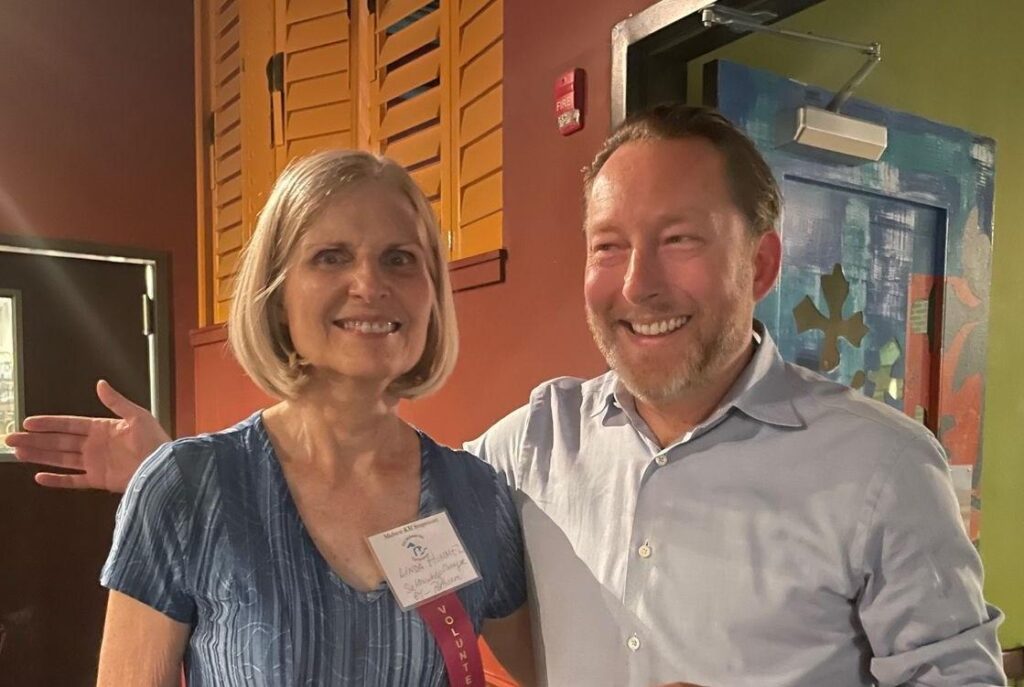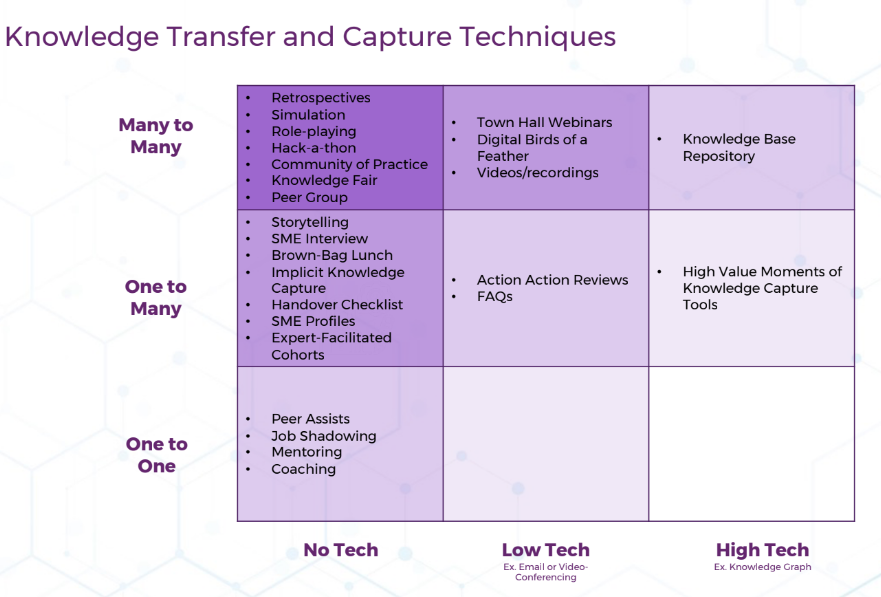9th Annual Midwest KM Symposium: Part 2 – Zach Wahl

Stan Garfield
This is the second in a series of posts about the Midwest Knowledge Management Symposium held June 16, 2023 at Kent State University in Kent, Ohio. This post is about the afternoon keynote delivered by Zach Wahl, CEO of Enterprise Knowledge, one of the three sponsors of the event.
Making Knowledge Management Clickable: Ensuring KM is Recognized as a Business Critical Element of Your Organization presented by Zach Wahl, Co-Author of Making Knowledge Management Clickable
Zach has over 20 years of experience leading programs in the knowledge and information management space. He has worked with more than 200 public and private organizations to successfully strategize, design, and implement information management systems, including knowledge bases, intranets, content management, document management, taxonomy management, and websites (eCommerce and informational). Zach has developed his own taxonomy design methodology, has authored a series of courses on knowledge management, and is a frequent speaker and trainer on information governance, web strategy, and taxonomy design.

Midwest KM Symposium Co-Chair Linda Hummel with Sponsor and Keynote Speaker Zach Wahl
Zach presented a talk based on his book of the same title and the work that his consulting firm, Enterprise Knowledge, performs for clients. He started with two definitions:
- Knowledge management involves the people, culture, processes, and enabling technologies necessary to capture, manage, share, and find information.
- The new mission of KM is to link all of an organization’s knowledge, in all its forms, making it not just findable, but understandable and actionable.
He further deconstructed KM into five segments:
- People
- Flow of knowledge through the organization.
- Knowledge holders and knowledge consumers.
- Understanding of state and disposition of experts.
- Process
- Existence and consistency of processes.
- Awareness of and adherence to processes.
- Quality of processes.
- Content
- State and location of content.
- Consistency of structure and architecture.
- Dynamism of content. Understanding of usage (analytics).
- Culture
- Senior support and comprehension.
- Willingness to share, collaborate, and support.
- Technology
- Maturity of KM Suite.
- Integration with and between systems.
- Usability and user-centricity.
Zach recommended focusing on high-value moments of knowledge capture and triggering experts to share at those times. He showed a KM Action Wheel with these spokes:
- Create: The point at which knowledge or information is first exposed, either in written or verbal form.
- Capture: The collection of information in a tool or repository (from tacit to explicit) so that it can be managed.
- Manage: Tools, technologies, and processes required to secure, organize, control, and expose the right information to the right people.
- Enhance: Processes to evolve and prime the information.
- Find: Tools and technologies to help people find the content they need, when they need it.
- Connect: Creating links between knowledge and information, between the holders of knowledge (experts), and between repositories.
He encouraged confronting six KM challenges being faced today:
- Proliferation of knowledge and information systems.
- Less structure, more social.
- Remote and hybrid work.
- Exponential increases in content and data.
- More barriers to collaboration and connections.
- The great resignation.
Zach said that artificial intelligence can be made real if you lay the right KM foundation:
- Governance: The roles, responsibilities, processes, and procedures necessary to maintain KM-related processes over time.
- Taxonomy & Information Architecture: Taxonomies are controlled vocabularies used to describe explicit concepts. Information architecture standardizes and simplifies where and how content is stored and tagged.
- Content/Document Management: The strategies, methods, and tools used to capture, manage, store, and share content and documents in the most optimal way possible.
- Search: The best search experiences connect people to information, information to information, and people to people, while addressing foundational concepts in search.
- Collaboration: The ability for stakeholders and users to work together in terms of content creation and content management.
- Change Management: Places people at the center of the process to make change real and ensure it sticks.
- Automation: The ability to reduce the manual work associated with tasks, processes, and procedures through the creation and application of technology.
He showed the following chart differentiating capture techniques from no tech to high-tech (X axis) and from one-to-one to many-to-many (Y axis):

Zach then defined ten core KM technologies and listed example software for each:
- Web content Management: Used to author, organize, manage, and publish content on a website. Examples:
- SiteCore
- GraphCMS
- CloudCMS
- Drupal
- WordPress
- Contentful
- Document & records Management: Designed to manage, secure, and control documents across an enterprise. Examples:
- Alfresco
- Documentum
- Box.com
- OpenText
- GoFileRoom
- Microsoft 365 / SharePoint
- Digital Assets Management: Designed to manage digital products like videos and images. Most frequently used by marketing and publishing departments. Examples:
- Adobe Experience Manager Assets
- Bynder
- Iconik
- Business Content Management: Content management tools built for a specific business purpose like customer or contract management. Examples:
- Apttus Contract Management
- SalesForce
- Dynamics 365
- Learning Management
- Collaboration: Tools designed to enable users to share content and collaborate using instant messaging or video conferencing. Examples:
- Microsoft 365 / Teams
- Slack
- ShareFile
- Firmex
- Knowledge Graphs: Architecture and data models to enable machine learning (ML) and other AI capabilities. Drive efficient and intelligent data and information management solutions. Examples:
- Expert Finder
- Recommendation Engine
- Customer 360
- Taxonomy Management: Enables organizations to maintain and expose their business taxonomies to KM systems. Examples:
- PoolParty (SWC)
- Cambridge Semantics
- Semaphore (SmartLogic)
- Synaptica
- Ontology Management: Empowers the creation and management of complex relationships between various sources of data. Examples:
- Stardog
- Neo4j
- Neptune
- Ontotext
- Enterprise Search: Search tools designed to query across multiple KM systems. Examples:
- Sinequa
- Lucidworks Fusion
- Elasticsearch
- Solr
- Component Content Management: Manages content at a granular level so portions of a piece of content can be reassembled and used for other content. Examples:
- Marklogic
- EasyDITA
- SDL Tridion
He finished the presentation by discussing Knowledge Graphs, Content Assembly and Customization, and Knowledge Portals and Advanced Search. Zach made efficient use of the 30 minutes allotted for his keynote. He offered useful frameworks and practical advice based on extensive experience delivering KM consulting to clients. You can read his blog posts and listen to his Knowledge Cast podcasts.
Part 3 of this series will feature Valdis Krebs. Part 1 featured Tom Stewart.

Stan Garfield
Please enjoy Stan’s blog posts offering advice and insights drawn from many years as a KM practitioner. You may also want to download a free copy of his book, Lucidea’s Lens: Special Librarians & Information Specialists; The Five Cs of KM from Lucidea Press, and its precursor, Proven Practices for Implementing a Knowledge Management Program. Learn about Lucidea’s Presto, SydneyEnterprise, and GeniePlus software with unrivaled KM capabilities that enable successful knowledge curation and sharing.
Never miss another post. Subscribe today!
Similar Posts
Only You Can Prevent Knowledge Loss: How to Practice “Knowledge Archaeology”
An overview of ways in which knowledge is lost, with examples of how to perform knowledge archaeology to recover and restore it.
Ready to Read: Profiles in Knowledge: 120 Thought Leaders in Knowledge Management
We are pleased to announce that Stan Garfield’s new book, Profiles in Knowledge: 120 Thought Leaders in Knowledge Management, is now available from Lucidea Press.
Lucidea’s Lens: Knowledge Management Thought Leaders Part 92 – Jay Liebowitz
Jay Liebowitz is a professor, consultant, author, and editor. His research interests include knowledge management, data analytics, intelligent systems, intuition-based decision making, IT management, expert systems, and artificial intelligence.
Lucidea’s Lens: Knowledge Management Thought Leaders Part 91 – Frank Leistner
The late Frank Leistner was the former Chief Knowledge Officer for SAS Global Professional Services, where he founded the knowledge management program and led a wide range of knowledge management initiatives up until 2012.




Leave a Comment
Comments are reviewed and must adhere to our comments policy.
0 Comments